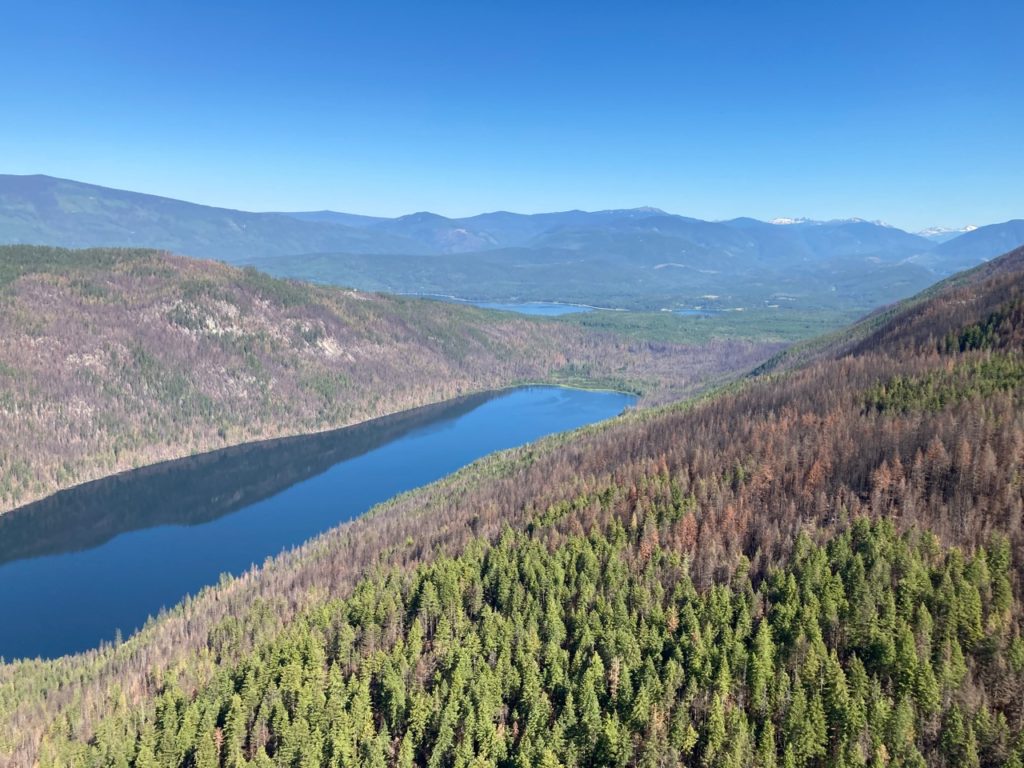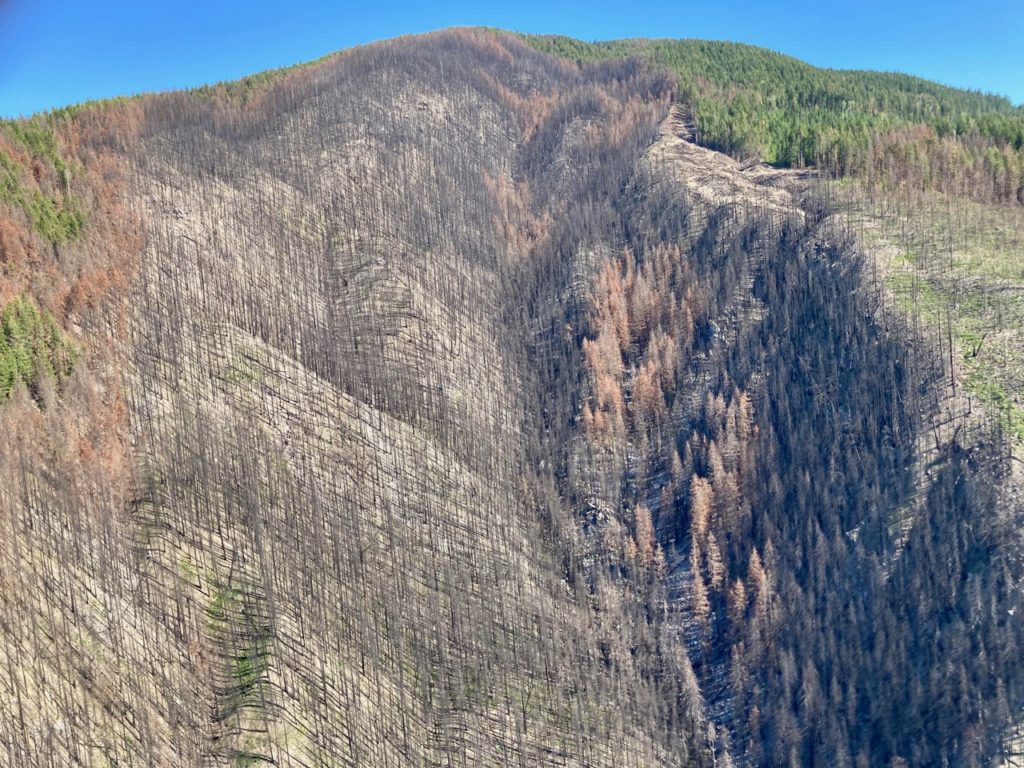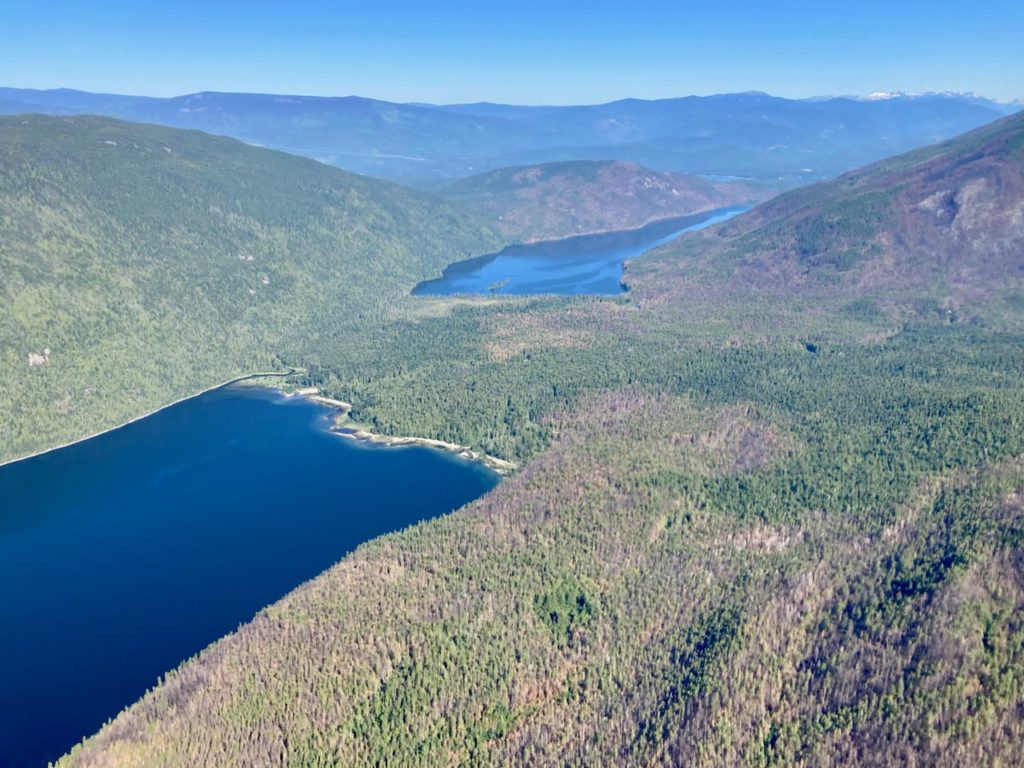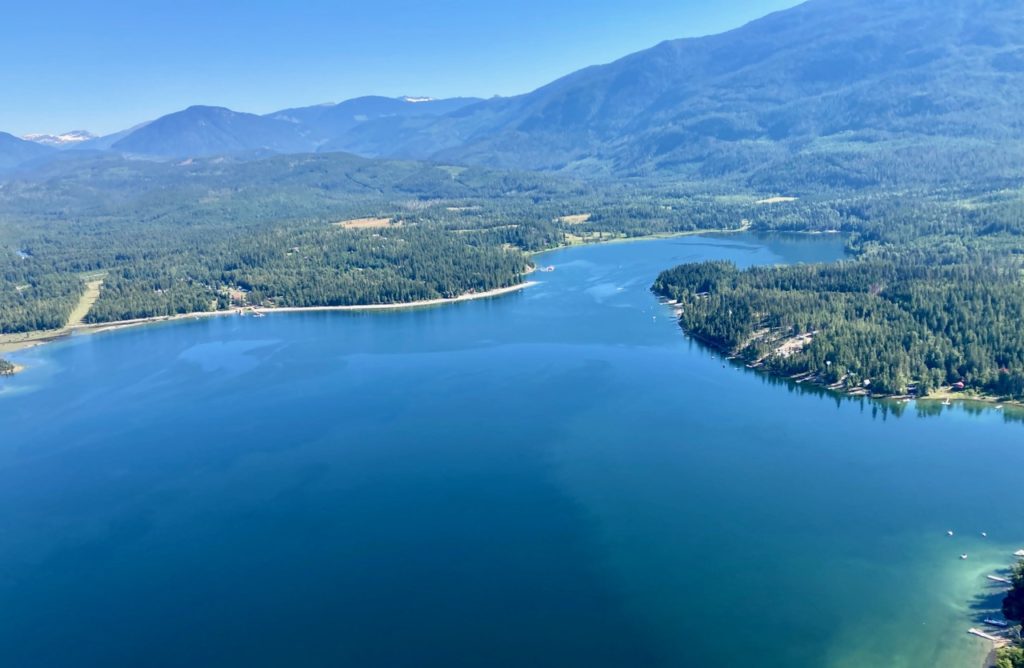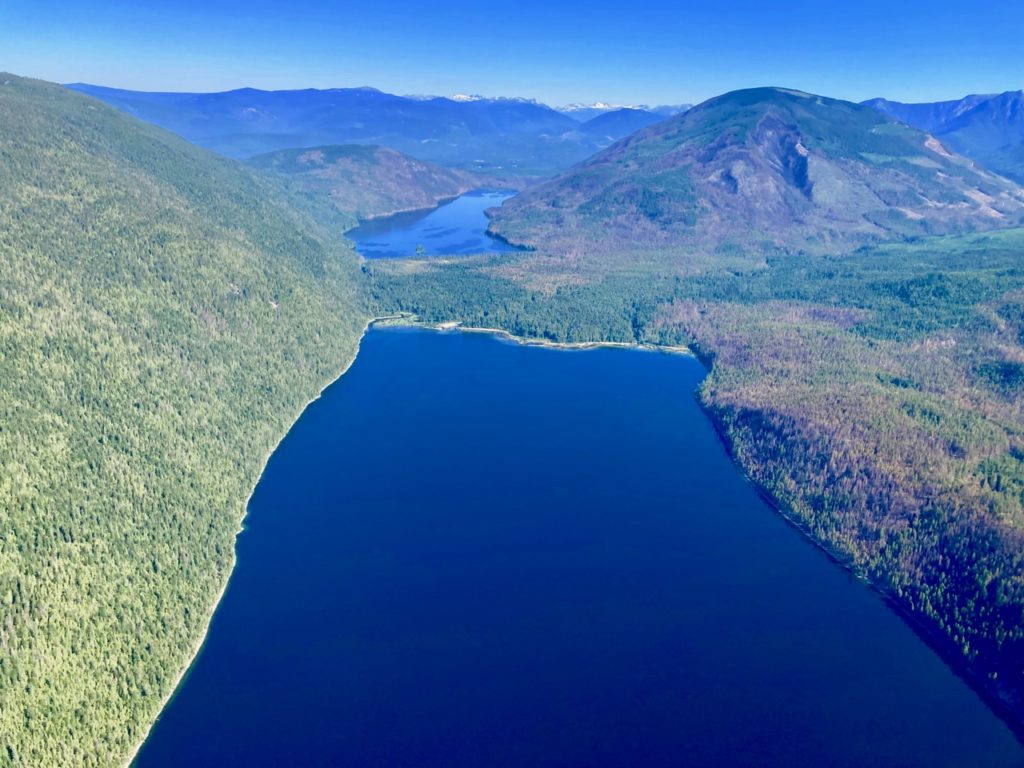
When the effort began in 1990 to protect Hunakwa Lake for its conservation values, there were plans for cut blocks and roads on the hillside above the lake. It took a decade of work including raising public awareness, field trips, assessments by an ecologist and naturalist, finding allies, making a video and finally five years of negotiation before the B.C. government legislated its Class A status.
Since it was established, little has been done to make it more accessible to the public other than a road was gazetted through private land for access. There was a plan for a parking lot and a kilometre or two walk-in trail to allow bringing in canoes and kayaks. After some survey work by the Shuswap Trail Alliance, there are also plans for a trail into nearby Wright Lake that could also connect to Hunakwa Lake.
B.C. parks are grossly underfunded, and when extra funds are provided, the money is typically used to provide more camping facilities in popular parks or help maintain decaying infrastructure. Consequently, the new parks in the Shuswap that were established over 20 years ago are unavailable for use by the public and with access overgrown, and now with the fires it is unlikely we will be able to hike to the Seymour Giant cedar tree, camp at Momich Lake, or canoe on Hunakwa Lake for years to come.
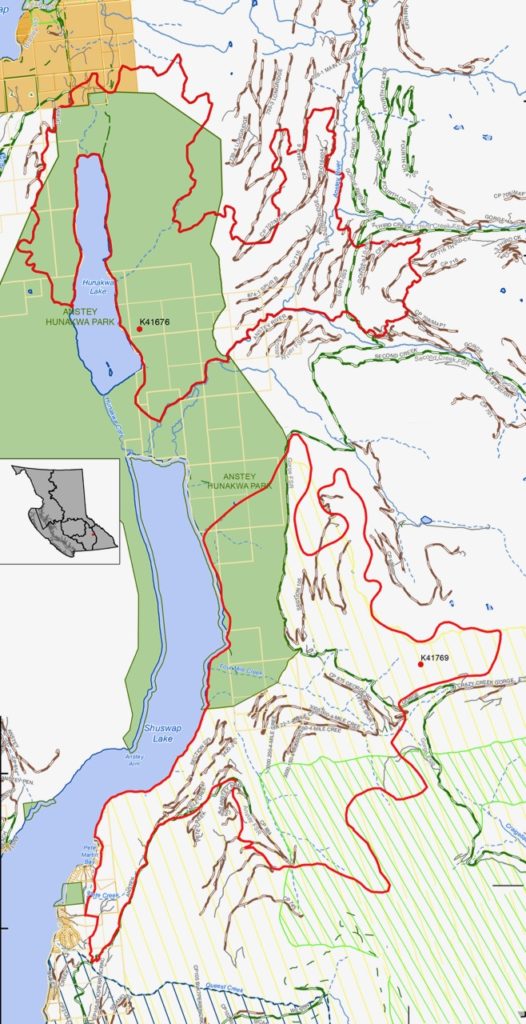
It was a lightning strike on the night of July 8, 2021 on the hillside above Hunakwa Lake that sparked the small blaze that a number of local residents from Seymour Arm saw the following day. They promptly reported it and soon a rapattack team was on its way. Apparently, about halfway there, the helicopter pilot was given new directions and turned around to take the crew to another fire. The B.C. Wildfire Service gives lower priority to fires in parks and thus the blaze quickly spread and was soon threatening the community of Seymour Arm, which had to be evacuated.
The day after the eventual 3,601-ha Hunakwa fire began, another lightning strike sparked a fire at near Gorge road above 4-mile Creek, which resulted in the evacuation of vacation homes at Queest Village and Pete Martin Bay. This 4,389-ha fire eventually nearly merged with the Hunakwa fire and manage to torch hundreds of hectares in the park east of Anstey Arm.
Ever since a change in weather helped extinguish the fires over two months after they began, I have wanted to visit the park that I had invested so much time and energy to help create. Last fall I learned there is a sign posted that forbids the public from entering due to the risk from falling burnt trees, but fortunately I was introduced to a local pilot who offered me an opportunity to view the fire from the air in his helicopter.
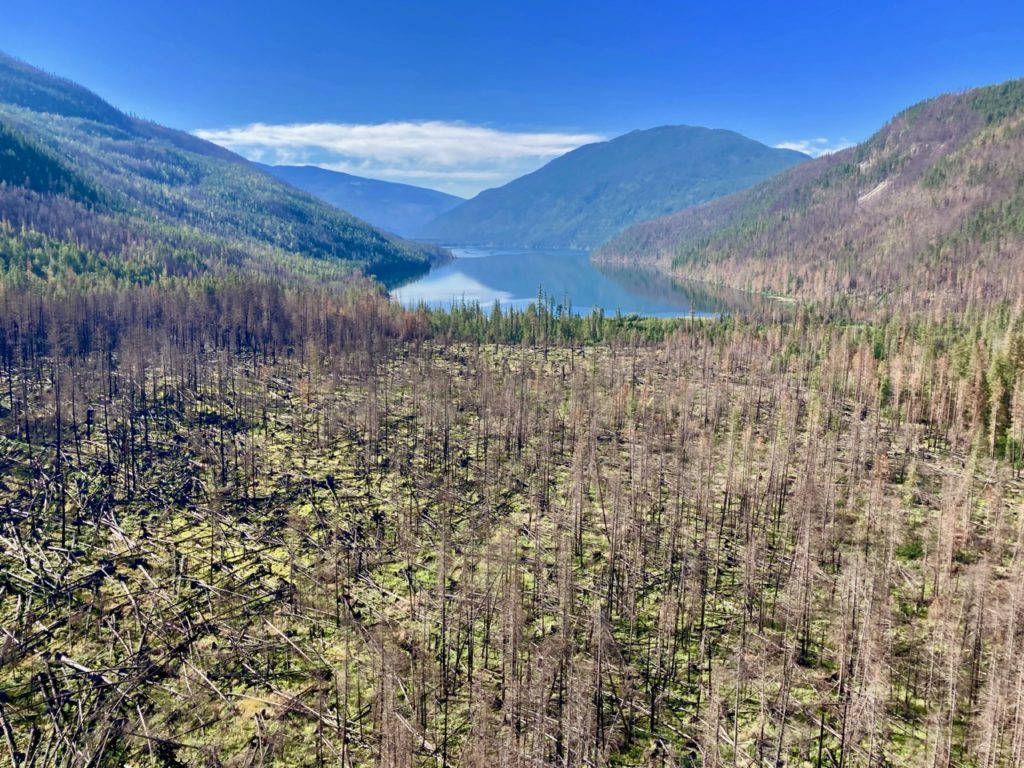
August 9th was a bluebird day and within a minute after take-off from the end of Bughouse Bay, we could see the devastation. The flat wetland north of the lake where the canoe access trail was planned is charred to a crisp, with many of the black spires tipped over by the wind. About three quarters of the hillsides surrounding Hunakwa Lake are covered with brown dead trees and threading through the burnt forest are fingers of green trees that survived the blaze. Fortunately, the old growth fir along the southwest side escaped the blaze along with most of the wetland old growth cedar between Anstey Arm and Hunakwa Lake and the area around Wright Lake.
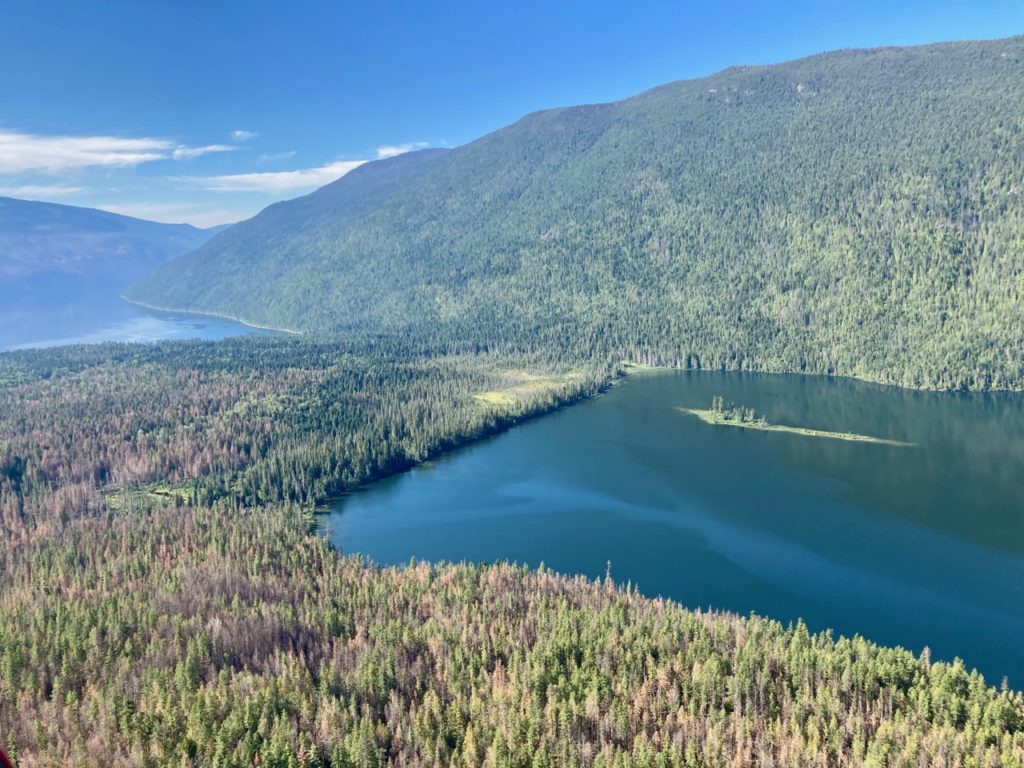
We saw how the fire had spread east up the Anstey River into the commercial forest, where it raced up a steep gorge and burned the forest to ash. The biggest surprise was that the firefighters had hurriedly carved out a fire break inside the park from the Beach Bay logging road up to above Hunakwa Lake, likely to prevent the fire from spreading south. The stumpage for the trees harvested was provided to BC Parks, and the proceeds from the timber was given to the Little Shuswap Lake Indian Band. When the fire break was built, the air was thick with smoke and the helicopters were grounded. The photo below shows how the fire stopped at the break. BC Parks will likely replant this area one day.
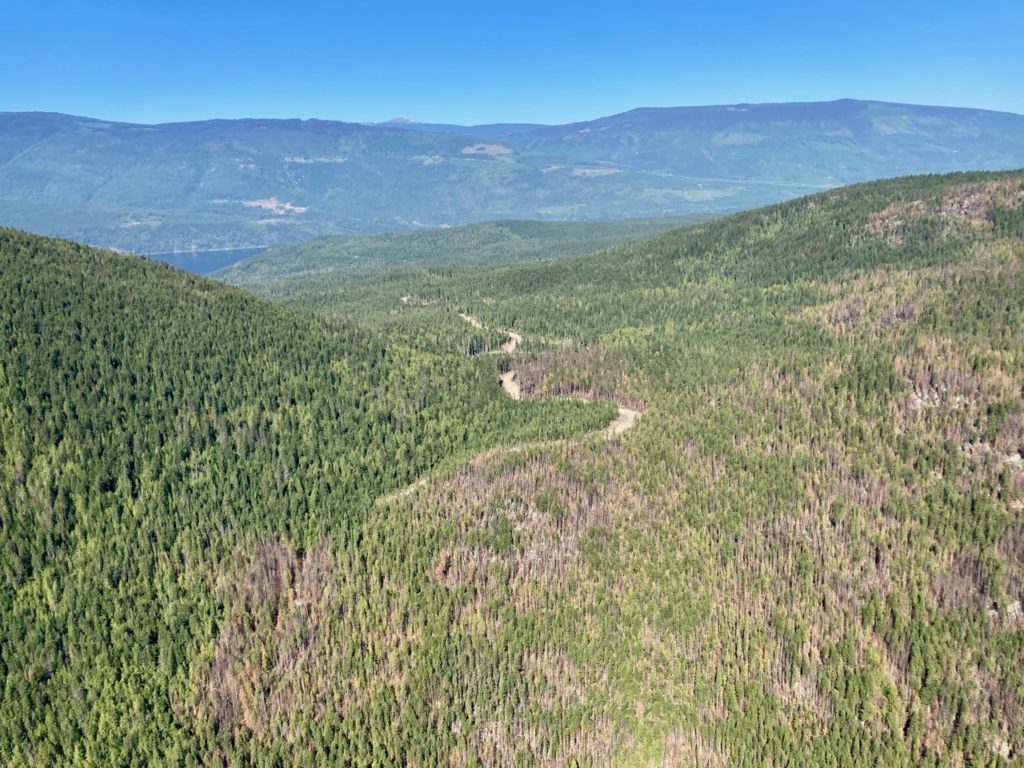
Ideally, there should be an effort made towards restoration that includes planting trees and shrubs and blocking access to the fire guard, so it does not become an unauthorized motorized trail. Consideration should be given to planting some deciduous trees, primarily birch, to help prevent future fires. Many of the trees that burned were younger stands that had grown since the last wildfire in the area in the 1960s. Once the area greens up in a few years, BC Parks hopefully will build the planned trails so that the public will finally be able to experience this pocket wilderness park and witness the growth of its new forest.
POSTSCRIPT
It was so disheartening to follow the news last summer as the fires devastated Shuswap’s key parks. We are all at risk every year as the planet heats up due to climate overheating. We all feel somewhat powerless as we face a future with higher temperatures, intense storms, more droughts and floods and corresponding forest pests and diseases. All we can do is work harder on climate change adaptation in order to survive and hopefully the BC government will do a better job at fighting forest fires with better air tanker support.
More images of the devastation:
